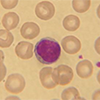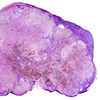Phenytoin
Specimen Volume
2 mL bloodSample Preparation
Centrifuge
Turnaround Time
24 hoursSample Processing In Laboratory
Usual
Sample Stability
Specimens can be stored at 4ºC for up to 2 days, for longer periods store frozen at -20ºC.General Information
Phenytoin is used to treat all types of seizure disorders except absence seizures; it is also used as prophylaxis after brain injury, although it has not been shown to be effective for other than short-term prophylaxis. Its unique feature is its nonlinear kinetics of action. Other features are numerous drug interactions and the potential for causing a wide variety of adverse effects. Although the mechanism of action is not established, phenytoin is theorized to act by blocking sodium channels in neuronal tissue, causing in prolongation of their rate of recovery and reduction in the frequency of sustained repetitive firing of action potentials.
When attempting to increase plasma concentrations of phenytoin, the dose should be increased byABW = IBW 1.33 (actual wt. − IBW)
where IBW is the ideal body weight.
Because children are faster metabolizers than adults, the dose (mg/kg) that was effective in a child will need to be decreased after puberty.
Long-term complications of phenytoin therapy include hirsutism, acne, coarsening of facial features, folate deficiency, vitamin D deficiency, and gingival hyperplasia, which can occur even if phenytoin is kept at “therapeutic” concentrations. Signs of toxicity include lethargy, drowsiness, nystagmus, diplopia, ataxia, vertigo, neuropsychological impairment, and nausea.
From Warner et al.Clinical Chemistry, May 1998 vol. 44 no. 5 1085-1095.
Samples should be taken at trough drug levels by collecting a sample prior to the next dose.
Patient Preparation
None
Notes
Serum sample is required (red or yellow top), gel tubes (yellow top) are preferred.
Do not analyse grossly haemolysed or grossly lipaemic samples.
Reference Range
Therapeutic range: 10.0 - 20.0 mg/L
*Minimum time for patient to reach steady state without loading or after dosage change is 7 days*
Source of Reference Range
Abbott DiagnosticsSpecifications
- EQA Status: NEQAS
- EQAS Scheme: Yes








